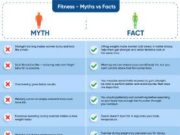In a world where dietary choices are as diverse as the cultures that inspire them, the quest for optimal nutrition often leads us beyond traditional paths. One such journey veers away from dairy, a long-standing source of essential nutrients, particularly calcium. As we step into a realm of non-dairy diets, the role of calcium emerges as a focal point, inviting us to explore alternative avenues to maintain bone health, cellular functions, and overall well-being. This article delves into the intricate dance between dietary preferences and nutritional needs, uncovering the myriad ways in which calcium can be sourced and integrated into a non-dairy lifestyle. Join us as we navigate this nutritional odyssey, discovering how to nourish our bodies while honoring our diverse dietary choices.
Calcium-Rich Alternatives for a Balanced Diet
- Leafy Greens: Dark leafy greens such as kale, collard greens, and bok choy are excellent sources of calcium. These vibrant vegetables not only add a splash of color to your plate but also provide a significant amount of calcium, making them a fantastic choice for those avoiding dairy.
- Fortified Plant Milks: Almond milk, soy milk, and oat milk often come fortified with calcium, making them a convenient and delicious substitute for cow’s milk. Check the labels to ensure you’re getting the fortified versions that can help meet your daily calcium needs.
- Nuts and Seeds: Almonds, sesame seeds, and chia seeds pack a calcium punch in a small package. Whether you sprinkle them on salads, blend them into smoothies, or enjoy them as a snack, they offer a crunchy and nutritious way to boost your calcium intake.
- Tofu and Tempeh: These soy-based products are not only rich in protein but also fortified with calcium. They can easily absorb the flavors of your favorite sauces and spices, making them a versatile ingredient in a variety of dishes.
- Beans and Lentils: Chickpeas, white beans, and lentils are not only hearty and filling but also contain calcium. Incorporate them into soups, stews, or salads for a nutrient-dense meal that supports bone health.
Embracing these alternatives not only ensures adequate calcium intake but also diversifies your diet with a plethora of flavors and textures, contributing to overall well-being and culinary satisfaction.

Exploring Plant-Based Sources of Calcium
When it comes to maintaining strong bones and a healthy lifestyle, calcium is a crucial mineral that often gets associated with dairy products. However, for those embracing a non-dairy diet, there are numerous plant-based alternatives that can provide the calcium your body needs. Leafy greens like kale, collard greens, and bok choy are excellent sources. These vegetables not only supply calcium but are also rich in vitamins A and C, making them a wholesome addition to your diet.
Incorporating fortified foods can further bolster your calcium intake. Many plant-based milks, such as almond, soy, and rice milk, are fortified with calcium and vitamin D, mimicking the nutritional profile of cow’s milk. Similarly, some cereals and orange juices are enriched to help meet daily calcium requirements. Don’t forget about nuts and seeds; almonds and sesame seeds, in particular, offer a substantial calcium boost. Embracing these varied sources can help ensure your bones stay robust, even without traditional dairy in your diet.

Understanding Calcium Absorption in Non-Dairy Diets
Incorporating sufficient calcium into a non-dairy diet requires understanding the dynamics of calcium absorption. While dairy products are often considered the quintessential source of calcium, there are numerous plant-based alternatives that can effectively meet nutritional needs. Leafy greens, such as kale and collard greens, offer a significant amount of calcium, albeit with varying absorption rates. Broccoli and bok choy are other excellent choices, as they boast both high calcium content and favorable absorption characteristics. To optimize calcium intake, it’s crucial to be mindful of factors that influence absorption. For instance, oxalates found in spinach can inhibit calcium absorption, whereas the vitamin C in citrus fruits can enhance it.
To ensure adequate calcium levels, it’s beneficial to incorporate a variety of calcium-rich foods and consider fortified options. Many plant-based milks, such as almond, soy, and rice milk, are fortified with calcium and vitamin D, mirroring the nutrient profile of cow’s milk. Additionally, foods like tofu, tempeh, and almonds provide not only calcium but also other essential nutrients that contribute to overall health. Supplements can be considered, but it’s always best to consult with a healthcare provider to tailor an approach that suits individual dietary needs. By diversifying food sources and being mindful of nutrient interactions, maintaining optimal calcium levels in a non-dairy diet is entirely achievable.

Practical Tips for Meeting Calcium Needs Without Dairy
For those embracing a non-dairy lifestyle, meeting calcium requirements might seem challenging, but it’s entirely feasible with a few strategic choices. Leafy greens such as kale, collard greens, and turnip greens are not only rich in calcium but also provide a plethora of other essential nutrients. Including these in your diet can be a delicious way to boost your calcium intake.
Consider incorporating fortified foods into your meals. Many plant-based milks, orange juices, and cereals are fortified with calcium and vitamin D, which enhances calcium absorption. Nuts and seeds, particularly almonds and chia seeds, are also excellent sources. Don’t forget about legumes, such as white beans and lentils, which can be easily added to soups, stews, or salads. By diversifying your diet with these options, you can effectively meet your calcium needs without relying on dairy products.































